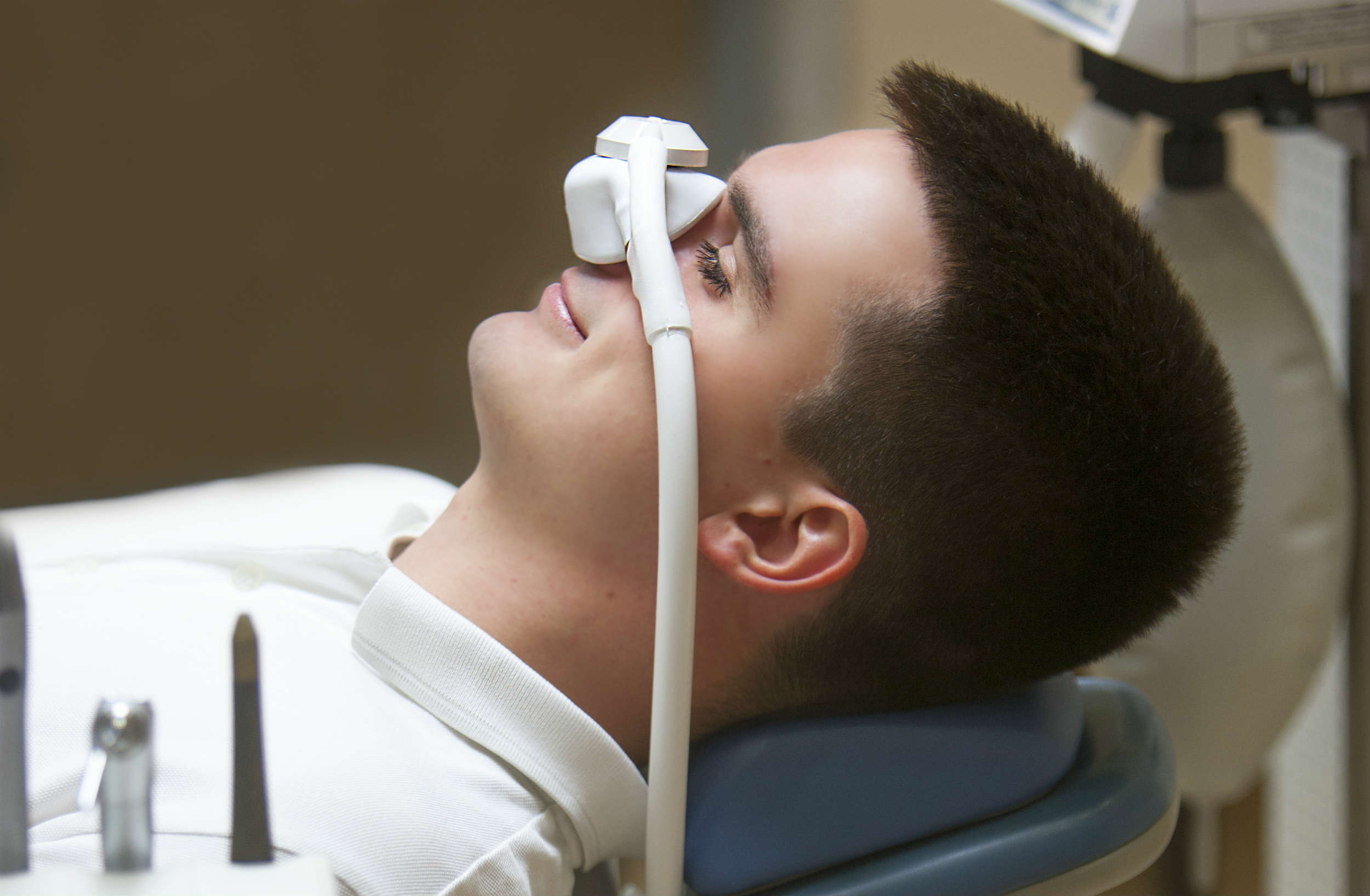When you think of going to the dentist, the image of laughing gas might come to mind. But is it still a common practice? This article explores the current role of nitrous oxide in dentistry, examining its uses, risks, and modern alternatives for a relaxed dental experience. We’ll separate fact from fiction, providing evidence-based information to help you understand this aspect of dental care.
The Continued Use of Nitrous Oxide
The rumor mill might suggest that nitrous oxide, commonly known as laughing gas, is a relic of the past. However, this isn’t entirely accurate. Nitrous oxide is still a relevant part of modern dentistry, offering a safe and effective way to alleviate mild to moderate dental anxiety. Think of it as a gentle relaxant, making the dental visit more manageable.
So, why the rumors of its decline? The shift likely stems from a combination of factors, including evolving safety concerns, advancements in sedation techniques, and a greater emphasis on patient-centered care.
One factor is the potential, though rare, risk of hypoxia—a condition where the body’s oxygen levels drop too low. While a serious concern, dentists are highly trained to monitor patients closely during nitrous oxide administration, minimizing the risk significantly. They carefully assess each patient’s suitability for nitrous oxide beforehand.
Another factor is the emergence of alternative sedation options, such as oral sedatives (pills) and IV sedation. These methods can induce deeper levels of relaxation, often preferred for complex procedures or patients with severe dental anxiety. Sometimes, it simply comes down to patient preference. Some individuals may prefer a pill or IV sedation over inhaling gas.
So, when do dentists still use nitrous oxide? It remains a valuable tool in several situations:
- Mild Anxiety: A suitable option for patients with mild dental jitters who don’t require deep sedation. Nitrous oxide can enhance comfort without the lingering effects of other methods.
- Pediatric Dentistry: Frequently used with children, as it’s relatively easy to administer and wears off quickly.
- Special Needs Patients: Can be a valuable tool for patients with special needs who may struggle with other sedation methods, helping them relax and cooperate during treatment.
It’s important to note that research on all sedation methods, including nitrous oxide, is ongoing. While currently considered safe and effective under the guidance of trained professionals, our understanding of its long-term effects may evolve.
Nitrous oxide hasn’t vanished. It remains a useful tool in the dentist’s arsenal. Dentists now have more sedation choices and select the most appropriate option based on the individual patient and the planned procedure. Nitrous oxide might not always be the only choice, but it’s still a valuable one.
| Sedation Method | Level of Sedation | How it’s Administered | Best For | Potential Downsides |
|---|---|---|---|---|
| Nitrous Oxide | Mild to Moderate | Inhaled through a mask | Mild anxiety, pediatric dentistry, special needs patients | Rare risk of hypoxia, may not be suitable for severe anxiety |
| Oral Sedatives | Moderate | Taken orally as a pill | Moderate anxiety, longer procedures | Longer onset and recovery time |
| IV Sedation | Moderate to Deep | Administered intravenously | Severe anxiety, complex procedures | Requires IV access, longer recovery time |
If you have concerns about sedation, talk to your dentist. They can discuss the options and help you choose the approach that best suits your needs.
Beyond Laughing Gas: Exploring Modern Sedation Alternatives
While nitrous oxide, affectionately known as laughing gas, holds a place in dental history, today’s practices offer a wider array of sedation options to cater to varying needs and anxieties.
One common method is local anesthesia, the gold standard for numbing a specific area. It effectively blocks pain signals, ensuring comfort during procedures like fillings, crowns, or root canals. You might feel pressure, but the pain is generally eliminated.
For mild to moderate dental anxiety, oral sedation can be a good fit. This involves taking a pill, typically a benzodiazepine, about an hour before your appointment. These medications induce relaxation and drowsiness, making the experience less stressful. While awake and responsive, you’ll likely feel calmer and less aware of the procedure.
For more complex procedures or higher anxiety levels, there’s intravenous (IV) sedation. This delivers sedatives directly into the bloodstream, resulting in deeper relaxation. You might feel groggy, and some patients even doze off. Time tends to pass quickly, and memory of the appointment may be limited.
Beyond these common alternatives, some dentists explore other methods. Inhalation sedation, using medications other than nitrous oxide, like sevoflurane, can offer deeper sedation with a quicker recovery. Research continues into alternative methods like computer-controlled local anesthetic delivery for more comfortable injections.
The right sedation method depends on several factors, including the procedure, your anxiety level, overall health, and preferences. Openly discuss any concerns with your dentist to tailor the approach to your specific needs.
Here’s a summary:
| Sedation Method | Description | Level of Sedation |
|---|---|---|
| Local Anesthesia | Numbs a specific area | Minimal |
| Oral Sedation | Pill taken before appointment, induces relaxation | Moderate |
| IV Sedation | Administered through IV, deep relaxation | Deep |
| Inhalation Sedation (excluding nitrous oxide) | Inhaled medication, can be deeper than nitrous oxide but faster recovery | Moderate to Deep |
Research in dental sedation is ever-evolving. New techniques and medications may emerge, continually improving patient comfort and access to anxiety-free dental care. Consult your dentist about the latest options and the best fit for your individual situation.
Why the Shift in Nitrous Oxide Use?
It’s true that nitrous oxide usage in dentistry has shifted. While still valuable in many practices, its popularity has dipped. This isn’t about it being “banned” or ineffective, but rather a reflection of evolving practices and priorities in modern dentistry.
Several factors likely contribute to this shift:
Safety: While generally safe when administered correctly, rare complications like hypoxia can occur. This potential, however small, has understandably encouraged some dentists to explore alternative sedation methods. It’s about carefully weighing the benefits against the risks.
New Sedation Tools: Dentistry has advanced significantly, offering several excellent alternatives to nitrous oxide for managing pain and anxiety. Oral and IV sedation provide effective relief, sometimes with fewer potential downsides than laughing gas. They can also offer more precise control over sedation levels.
Modern Dentistry’s Focus on Comfort: Today’s dentistry prioritizes patient comfort and safety. This patient-centered approach has influenced the shift away from nitrous oxide. Alternative methods often provide a smoother, more predictable experience, especially for lengthier or complex procedures.
Ongoing Research: Research in dental sedation continually seeks safer and more effective methods. While nitrous oxide still has its place, the options available to dentists and patients are constantly evolving.
Here’s a summary:
| Feature | Nitrous Oxide | Alternative Sedation Methods |
|---|---|---|
| Current Use | Still used, but less frequently | Increasingly popular |
| Safety | Generally safe, but rare serious complications possible | Potentially fewer risks |
| Effectiveness | Effective for mild to moderate anxiety and pain | Effective for a wider range of anxiety and pain levels |
| Control | Less precise control over sedation levels | More precise control |
| Onset/Recovery | Relatively quick | Often faster onset and recovery |
What This Means for You: If you have dental anxiety, discuss your concerns with your dentist. They can explain the various sedation options and help you choose the best one for your needs. There’s no one-size-fits-all solution. The right choice depends on your health history, the procedure, and your preferences.
It’s important to remember that although nitrous oxide use may be declining, it remains a safe and effective option for many. Modern dentistry offers various choices for a comfortable dental experience. Don’t hesitate to ask questions and explore what’s right for you.
Learn more about misleading health information, such as PEMF therapy quackery and explore the concept of optimal breast size, often referred to as tibbies.
- Find Your Perfect Feather Fan: A Guide to Luxury & Value - June 26, 2025
- Find FCOVD Certified Optometrists: Expert Vision Therapy Now - June 26, 2025
- Heal Family Favoritism:Solutions & Support - June 26, 2025










